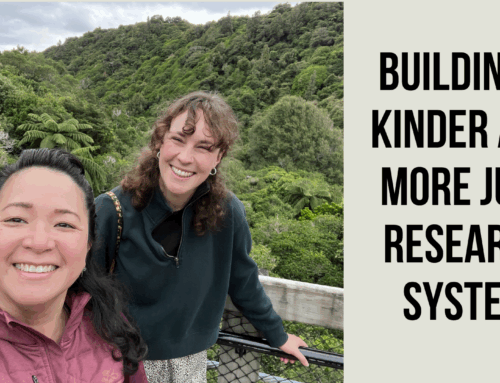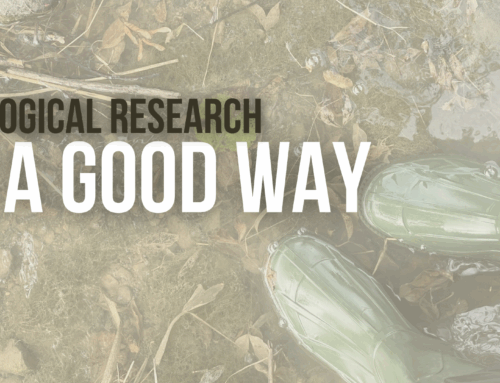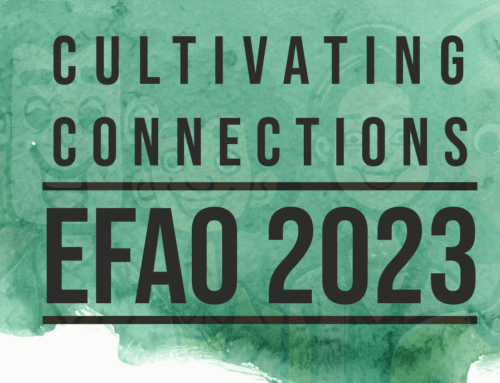What does it mean to be an ally? We receive a lot of questions about our partnerships with Indigenous and local farming communities and it was a privilege to address these questions through an invited podcast episode on Teach Me About the Great Lakes by the Illinois-Indiana Sea Grant College Program. In our very first(!) podcast experience, Catherine & Katrina joined co-hosts Stuart and Carolyn to discuss the lab’s “radical approach” to building a research team, how our core values transform into actions through funding opportunities and trust-based partnerships with Indigenous communities in the Great Lakes.
Tune in as we begin the episode with the importance of headwater streams in Great Lakes restoration, and onto how our research addresses growing evidence for approaches that maximize ecosystem science alongside engagement with local and Indigenous knowledges and communities. We draw on published evidence of successes gained from Indigenous-led stewardship and restoration (1-4) and national science organizations such as New Zealand’s Biological Heritage National Science Challenge. The science and the moral imperative are clear: as we stand on the doorway into the UN Decade of Restoration (5), partnerships to leverage action on the ground are essential for long-term planetary sustainability.
This podcast ends with issues that we explore within our team around what it means to be an ally. We hope this episode gives you a glimpse into where we are in our shared journey, and how we actively revisit the term allyship individually and collectively, and see it manifested differently by different people. For our team, it has involved building trust, transparency and consistently allowing for ample time to listen, and research approaches that are responsive to and centered by local communities. Practically speaking, it’s also about dedicating and directing research funds towards these efforts, embracing two-eyed seeing, moving beyond land acknowledgements through the hiring and investing in emerging Indigenous scientists to honour their gifts and achieve successes on their terms.
Our actions, big and small, within our team and beyond, such as through communication experiences like this podcast, contribute to our commitment to reconciliation with Indigenous communities and rights holders in Canada and beyond. It may just be the critical step towards guaranteeing our planet’s sustainability for future generations.
Chi-miigwech / Thank you to the IISG, Stuart and Carolyn for the opportunity to share, engage and connect. Oh, and we put in our vote for best donuts in Windsor, too: Plant Joy, of course!
References
1 Febria et al. In Press. Partnerships Generate Co-Benefits in Agricultural Stream Restoration (Canterbury, New Zealand). Case studies in the Environment.
2 Suding, K., Higgs, E., Palmer, M., Callicott, J.B., Anderson, C.B., Baker, M., Gutrich, J.J., Hondula, K.L., LaFevor, M.C., Larson, B.M.H., Randall, A., Ruhl, J.B., Schwartz, K.Z.S., 2015. Committing to ecological restoration. Science 348, 638–640. https://doi.org/10.1126/science.aaa4216
3 Ban, N.C., Frid, A., Reid, M., Edgar, B., Shaw, D., Siwallace, P., 2018. Incorporate Indigenous perspectives for impactful research and effective management. Nature Ecology & Evolution 2, 1680. https://doi.org/10.1038/s41559-018-0706-0
4 IPBES. 2018. The IPBES assessment report on land degradation and restoration. Montanarella, L., Scholes, R., and Brainich, A. (Eds.). Secretariat of the Intergovernmental Science-Policy Platform on Biodiversity and Ecosystem Services, Bonn, Germany. 744 pages. https://doi.org/10.5281/zenodo.3237392
5 UN Decade on Restoration 2021-2030. https://www.decadeonrestoration.org/







